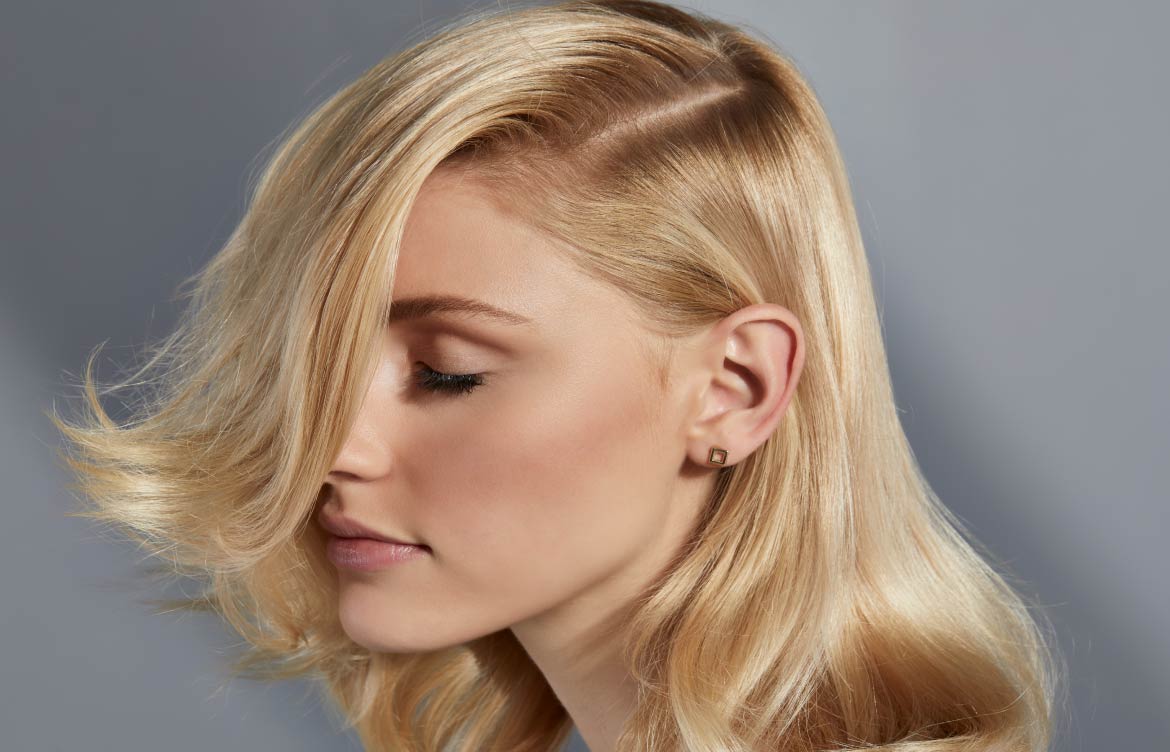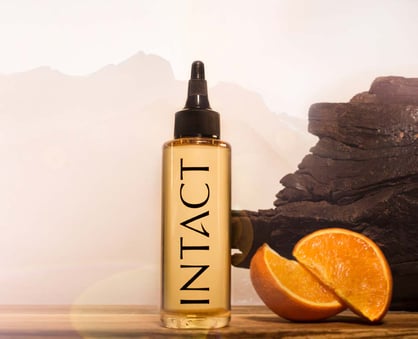How to Get a Healthy Scalp - Best Scalp Treatments, Health Tips & Care

How to Keep Your Scalp Healthy
We’ve all scratched, scrubbed, and scoffed at our hair from time to time, but the hair isn’t actually the one to blame in most cases. An unhealthy scalp will inevitably create lackluster, dull, flat-looking hair. Worse, you might find yourself begrudgingly scratching and itching without relief. Who has time for that?
Conversely, a hydrated, nourished, well-maintained scalp will produce shiny, bouncy, beautiful locks. And that’s why it’s vital to understand the importance of scalp hygiene.
Let’s be honest: beyond applying shampoo and swatting away flakes and dandruff, most of us overlook the hygiene required for a healthy scalp. Sound familiar?
Well, ladies, that changes today! We’re here to help you identify the early signs of an unhealthy scalp, give you the best scalp health tips, and ensure you feel confident about the state of your scalp and hair.
The Importance of A Healthy Scalp
As you may remember from 8th-grade anatomy class, the skin is the body’s largest organ, and your scalp is part of your skin. Just like your face, your scalp is covered in pores with hair follicles inside. But scalp health isn’t some arbitrary topic; no, research shows that our hair is a major part of our self-esteem and identity as women.
If our hair is intimately woven into our identity, shouldn’t we treat scalp health as a top priority? The fact is, many women don’t know exactly how to get a healthy scalp.
Scalp health is a complex topic and requires ongoing preventative care to avoid dandruff, inflammation, and excessive shedding. Many of the problems that lead to an unhealthy scalp are hard to spot, as they happen inside the hair follicle.
One of the scalp’s primary purposes is to incubate pre-emergent hair fibers or hair that hasn’t grown beyond the scalp into post-emergent hair yet. According to a 2015 scholarly review, the health of hair fibers depends on both pre-emergent and post-emergent factors.
Often, you won’t notice an unhealthy scalp until down the line, when significant problems like hair loss start happening. You can avoid this hair scare by understanding the signs of poor scalp health.
Signs of An Unhealthy Scalp
An unhealthy scalp may have a myriad of causes, from what we eat to the climate we live in. One common factor among unhealthy scalp symptoms is oxidative stress.
Typically, our body produces the same number of free radicals, which can cause damage, and antioxidants, which stop free radicals from causing damage. Oxidative stress happens when our body can’t produce enough antioxidants to counteract the damage.
According to a 2018 literature review, oxidative stress is a key element of an unhealthy scalp. Oxidative stress comes from both internal and external factors and can lead to premature hair loss.
When your scalp is struggling to fight these internal or external stressors, it will often communicate the problem through various symptoms.
So, how do you know if your scalp is unhealthy?
Here are all the signs to look out for:
- Greasy or oily hair. Oily hair may or may not be a sign of an unhealthy scalp, depending on if your hair is naturally oily. To put it another way: maybe you’re born with it, maybe it’s your routine. However, excess oil from your sebaceous glands can clog the pores in your scalp.
- Dandruff. Dandruff shows up with dry scalp or pesky patches of scales or flakes on the scalp. What causes it? In some cases, sensitivity to a particular hair product can cause dandruff, in which case avoiding the ingredient can often make the flaking stop. However, dandruff may result from a yeast-like fungus called Malassezia that thrives on an oily scalp — another reason excess oils can cause problems.
- Scalp Itchiness. If your scalp is sore and itchy for more than a few days, that’s not a good sign. It’s usually caused by a lack of moisture, leading to dryness and irritation. Like dandruff, individual sensitivity may be the culprit, but not always. Moreover, itchiness isn’t just a symptom of an unhealthy scalp; it can also be a symptom of dandruff, eczema, or psoriasis. Needless to say, it’s best not to overlook it and keep the scalp hydrated.
- Inflammation. Scalp inflammation or redness may come from sunburn or a very tight hairstyle, but the worst cases may indicate an underlying skin condition. If you have persistent scalp inflammation that shows up with flaking, it could be an infection, psoriasis, or eczema. Left untreated, inflammation could lead to hair loss.
- Hair Shedding or Thinning. The hair growth cycle naturally causes 50-100 strands to fall daily. However, if you’re losing hair en masse or notice your hair thinning in patches, especially around the hairline, you may be suffering hair loss or alopecia. Mild hair loss may be due to stress or nutrient deficiency, while more severe hair loss may develop into alopecia.
Have you spotted any of these signs? Then it’s likely time for some effective hair and scalp care. To help you out, we’ve gathered our trusted industry scalp health tips to help you restore your scalp (and hair!) to its most fabulous state.
Best Tips for a Healthy Scalp
If we could sum up the best scalp treatment in one word, it’d be “balance.” First and foremost, maintaining a healthy scalp means finding a balance between too much natural oil and moisture and not enough.
Of course, our natural hair oils aren’t the only factor in hair and scalp treatment. Since hair follicles are part of the skin, our overall health can affect how well our hair grows. Having the proper nutrients in your diet, staying hydrated, and getting enough blood circulation can contribute to general well-being and help to improve scalp health.
How do you eat an elephant? One bite at a time. Of course, no elephants were harmed during the research and writing of this article, but the adage holds true: small shifts in your daily habits will procure a thriving, healthy scalp.
Luckily, it’s easy to incorporate these tips into your daily routine! Our recommended healthy scalp tips include:
- Massage Your Scalp
- Eat a Balanced Diet
- Reduce Washing & Condition Regularly
- Limit Chemical Treatments
- Protect Your Hair
Now, let’s explore our scalp health tips a little deeper.
1. Massage Your Scalp
Who doesn’t love a soothing massage? Scalp massages are more than a dose of daily zen, though, because they can improve scalp health!
Why do scalp massages work? The massage stretches your hair follicle cells, allowing thicker hair to emerge. Increased blood circulation also helps hair follicles maintain a healthy growth cycle. Lastly, massages prevent follicular miniaturization, a process where hair follicles miniaturize over time and eventually stop producing new hair.
In one study, participants received scalp massages for four minutes a day for 24 weeks. The results? Thicker hair, more expression from hair cycle-related genes, and less expression from hair loss-related genes.
Another 2019 study added weight to the theory, concluding that standardized scalp massages can also help to combat androgenetic alopecia. Participants spent around 11-20 minutes massaging their scalp daily for about six months, and interestingly, 68.9 percent reported stabilized hair loss and regrowth.
Overall, the most positive results occurred after an average of 36.3 hours of scalp massage. You can work toward these results by devoting a little time every day to some scalp R&R:
- Incorporate a massage into your hair and scalp care routine by massaging shampoo into the scalp. Take your time and use a small, circular motion to distribute the shampoo throughout your scalp.
- On your non-wash hair days, use your fingertips to apply gentle pressure to your scalp in small circular movements for a few minutes at a time.
- Try a scalp massage tool like a silicone shampoo brush, electric head massager, or exfoliating dandruff brush.
Beyond the hair growth benefits, the stress-reducing effects of a scalp massage can improve scalp health internally, too. With a group of female participants, one study found that biweekly scalp massages decreased the women’s stress significantly. Say it with me now: “Ommm.”
2. Eat a Balanced Diet
We're all aware of the effects of healthy eating on overall health, but this also applies to your scalp. Recent findings examining the link between diet and hair loss illustrated how deficiencies of protein, fatty acids, zinc, Vitamin D, and biotin could contribute to hair loss, skin conditions, and even infections.
Remember the damaging effects of oxidative stress? Loading up on antioxidants like zinc and Vitamin C will keep oxidative stress at bay. Foods rich in zinc include legumes, nuts, and whole grains. Yummy sources of Vitamin C include citrus fruits, tomatoes, bell peppers, and potatoes. Fries for the table, anyone?
And what about protein? Of course, you can go for your standard animal proteins like eggs, chicken, and most dairy products. Additionally, fish and fortified milk can give you fatty acids and Vitamin D, while red meat and eggs will up your biotin intake. If you eat a plant-based diet, reach for tofu, complete proteins like black beans and brown rice, lentils, and vegan protein powders formulated from chickpeas or pea-protein.
Let’s step out of the kitchen and into the shower to talk about your washing routines.
3. Limit Washing & Condition Regularly
Washing your hair regularly keeps your hair clean, but overwashing can strip the moisture from your scalp and weaken hair follicles. Your hair will be drier than it should be, which kicks the sebaceous glands into overdrive, where they produce too much oil.
Wondering, “how often should I wash my hair?” It all comes back to balance, as well as hair type.
Do you have fine or thin hair? If so, it’s best to wash it every 2-3 days or a couple of times a week to avoid an overproduction of oils and grease. Women with thick or coarse hair can get away with washing once a week because oils don’t accumulate on the scalp as quickly.
When it comes to ingredients, amino acids and biotin will help strengthen your scalp and strands, and pH balancers like glycolic acid can protect the hair cuticle, especially if you’re experiencing dandruff.
Avoid shampoos with lots of ingredients that end in “sulfate,” as these have the same effects of overwashing. It’s best to avoid dimethicone as well, which can irritate your scalp and clog pores.
What about conditioner?
Conditioner is your hair’s weapon and shield on the battlefield of daily life. After washing, apply conditioner from the mid-hair shaft to the ends. A weekly conditioning mask can also help your scalp stay hydrated and oh-so-healthy.
4. Limit Heat & Chemical Treatments
You’ve probably heard that bleach and hair dye cause damage, but what’s the science behind it? Bleaching opens the cuticles to get inside the cortex (the thickest hair layer between the medulla and cuticle) and chemically removes your hair color. Inside the cortex, a lightening agent (usually hydrogen peroxide) oxidizes your hair’s natural pigment molecule, melanin. Permanent hair dye does the same but replaces the melanin with a new color.
For an even change, you have to apply bleach and/or dye to the roots, where it often brushes against the scalp. When this happens, the chemicals can cause irritation and contact dermatitis.
Using heated styling tools can cause structural issues, too. Heat tools dissolve your hair’s natural hydrogen bonds and make stands drier and weaker. Repeated exposure to heat tools can cause the hair cuticles to break off. Not good.
The best healthy scalp care routine would involve cutting out chemicals and heat tools entirely. However, this is simply not pragmatic for most of our daily needs and lifestyles. Instead, you can opt for semi-permanent dyes or only apply treatments to the ends of your hair — a good balayage or ombre is always in style! Just be sure you add a conditioning regimen to your routine after. For heat, you can limit damage to your scalp by applying a heat protectant first and only using your tools on a lower heat setting, ideally 365℉ (185℃) or lower.
Speaking of protectants, there is one more vital step you’ll want to take for optimal scalp health.
5. Protect Your Hair
Since an unhealthy scalp can be hard to detect, taking preventative measures will help you avoid major problems down the road. Luckily, we’ve got plenty of healthy scalp tips for protecting your hair, starting with preventing sun damage.
According to research on the effects of ultraviolet radiation and environmental toxins on hair, exposure to the sun’s UV rays can interfere with the scalp’s ability to protect hair, resulting in weak, lackluster locks. Protect your scalp by wearing a sun hat or applying hair sunscreen before a long day in the sun.
Certain hair care routines can also spell trouble for your scalp. Besides overwashing, rubbing your hair with an abrasive towel or brushing your hair while it’s wet are no-nos in your shower routine. Each of these habits can weaken the cuticles or pull the hair straight out of your scalp. Instead, first squeeze water from your hair gently, then wrap it in a soft microfiber towel or blow-dry it on a cool setting.
Following the above tips can help you establish a healthy hair and scalp routine, but if you’re looking for the ultimate nourishing scalp treatment? Look no further than INTACT.
INTACT Scalp & Hair Treatment
 INTACT is the best scalp treatment on the market, and we’ve got the science to prove it.
INTACT is the best scalp treatment on the market, and we’ve got the science to prove it.
Developed by industry-leading scientists and dermatologists, INTACT strengthens and protects your hair at the root: your scalp! INTACT contains a potent isolate of Sevilla Orange extract that locks hair in place at the follicle, strengthening your scalp to resist the tension and pulling that causes hair loss. Once the hair is secured, coconut fatty acids soften and moisturize your locks, creating unbeatable volume and shine.
How do you use INTACT? At home, simply apply INTACT to your hair and scalp and let it sit for 30 minutes. Then, hop in the shower and proceed with your regular hair washing routine. That’s it! The formula is so effective; you’ll see a noticeable difference after just one use.
You can scour the web for the best hair and scalp treatments, but nothing compares to INTACT.
Nurture Your Scalp Today!
Many factors play a role in beautiful, luxurious hair, but a healthy scalp is vital for healthy strands to grow and flourish. If you’re ready to take your hair and scalp care to new heights, incorporate the tips we’ve outlined here into your daily routine. It’s these small changes that will have a lasting effect on your scalp’s ecosystem and hair health.
Take it from curly girl Liane of @curlycast:
“Without a healthy scalp, you cannot have healthy hair. There's no compromise on this. It's like asking a flower to bloom without soil.”
Are you ready to let your scalp bloom? You’re just 30 minutes away.


